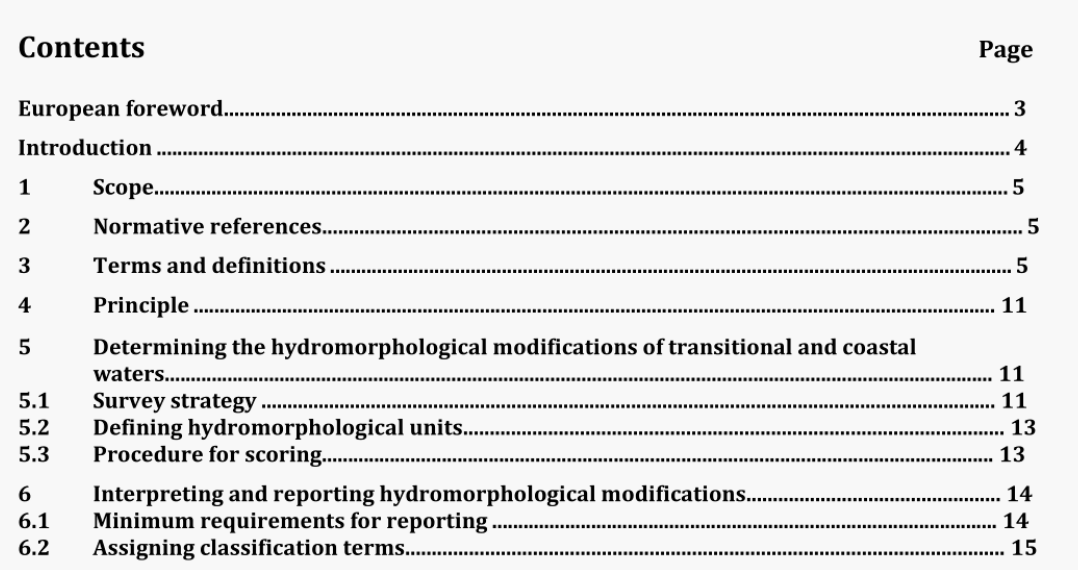BS EN 17123:2018 pdf download.Water quality – Guidance on determining the degree of modification of the hydromorphological features of transitional and coastal waters
1 Scope
This document provides guidance on characterizing the modifications of the hydromorphological features of TraC waters described in EN 16503, enabling consistent comparisons of hydromorphological modification between TraC waters within a country and between different countries in Europe. Its primary aim is to assess “departure from naturalness” as a result of human pressures on TraC hydromorphology, and it suggests suitable sources of information that may contribute to describing the modification of hydromorphological features. The procedures set out in this standard will encourage the objective assessment and reporting of the variability in transitional and coastal waters, and contribute to the work needed to implement the WFD and the MSFD; however, it does not replace methods that have been developed for local assessment and reporting.
4 Principle
A standard protocol is described for assessing the extent to which the hydromorphological features of TraC waters are modified by human activities; transitional waters include estuaries, lagoons, deltas, rias and fjords. These features have been divided into two groups 一those that describe the static, structural features, i.e. shape, underlying geology, sediment patterns, etc., and the dynamic, functional processes, including water movements, sediment budgets and water characteristics. All of these are given as generic types but can be adjusted in a site-specific context and are used to determine any “departure from naturalness” as a result of human pressures on the hydromorphology of TraC waters. Those structural and functional attributes then provide the fundamental niches that are colonized by organisms and thus produce the biological assemblages characteristic of these areas. The structural features often can be determined from easily available maps, charts, aerial photographs, databases, or by remote sensing. The functional processes, on the other hand, need to be determined within each water body and, given the high spatial and temporal variability in these features, usually require an intensive sampling campaign or modelling procedure and also detailed and specialized analysis and interpretation. Given the difficulty in determining some functional attributes, both this European Standard and EN 16503 gives more attention to TraC structural features which can be regarded as surrogates for hydrodynamic processes. For example, the bed sediment grain size may reflect the hydrodynamic regime. The main output from this standard is a method for the assessment of the modification of hydromorphological features of an entire estuary or other transitional water (TW), a part of it, or a length of a coast. This includes parts of the TraC water bodies requiring restoration because of recent or historical modification, or where near-natural conditions need to be protected.
BS EN 17123:2018 pdf download
